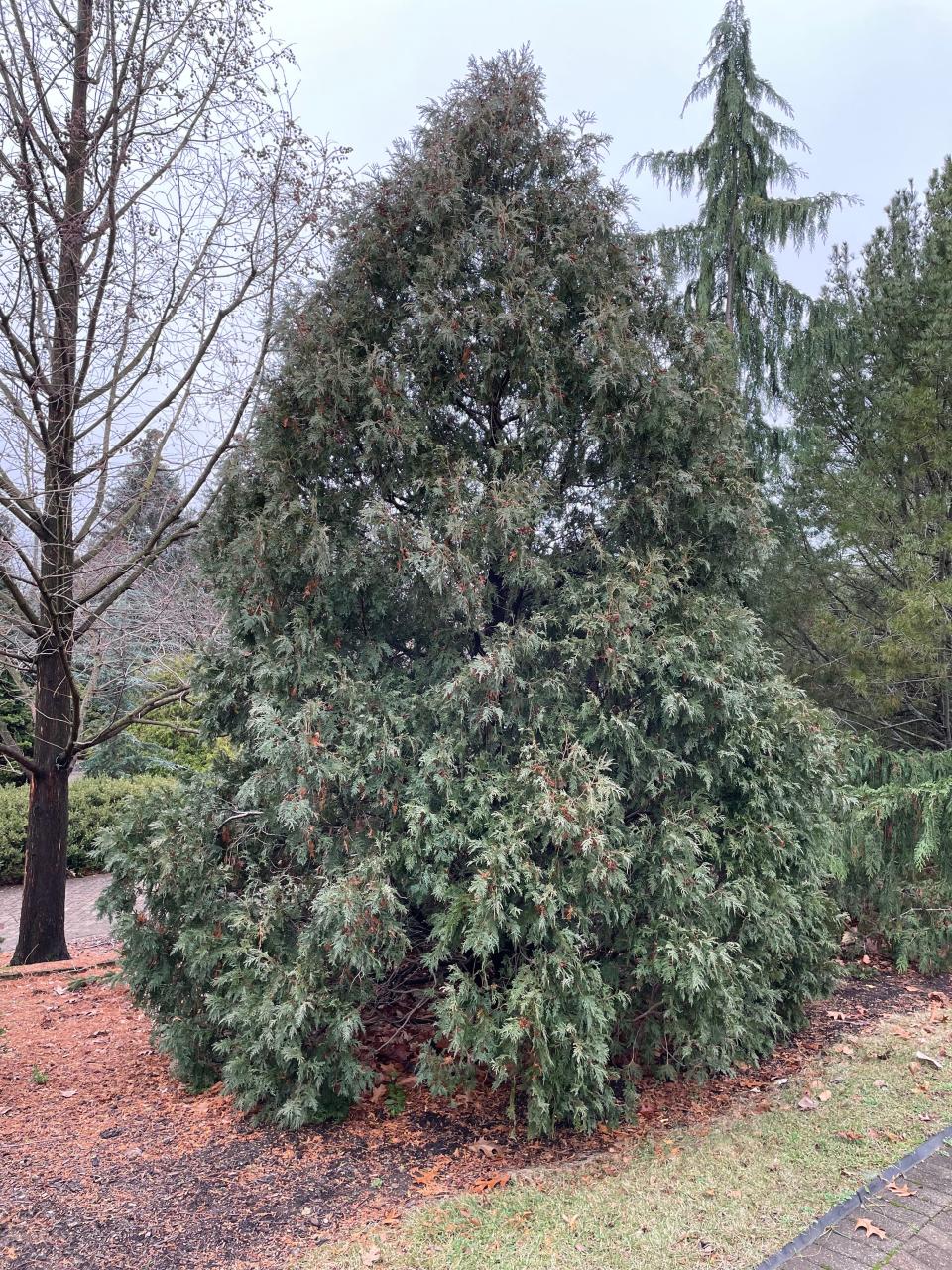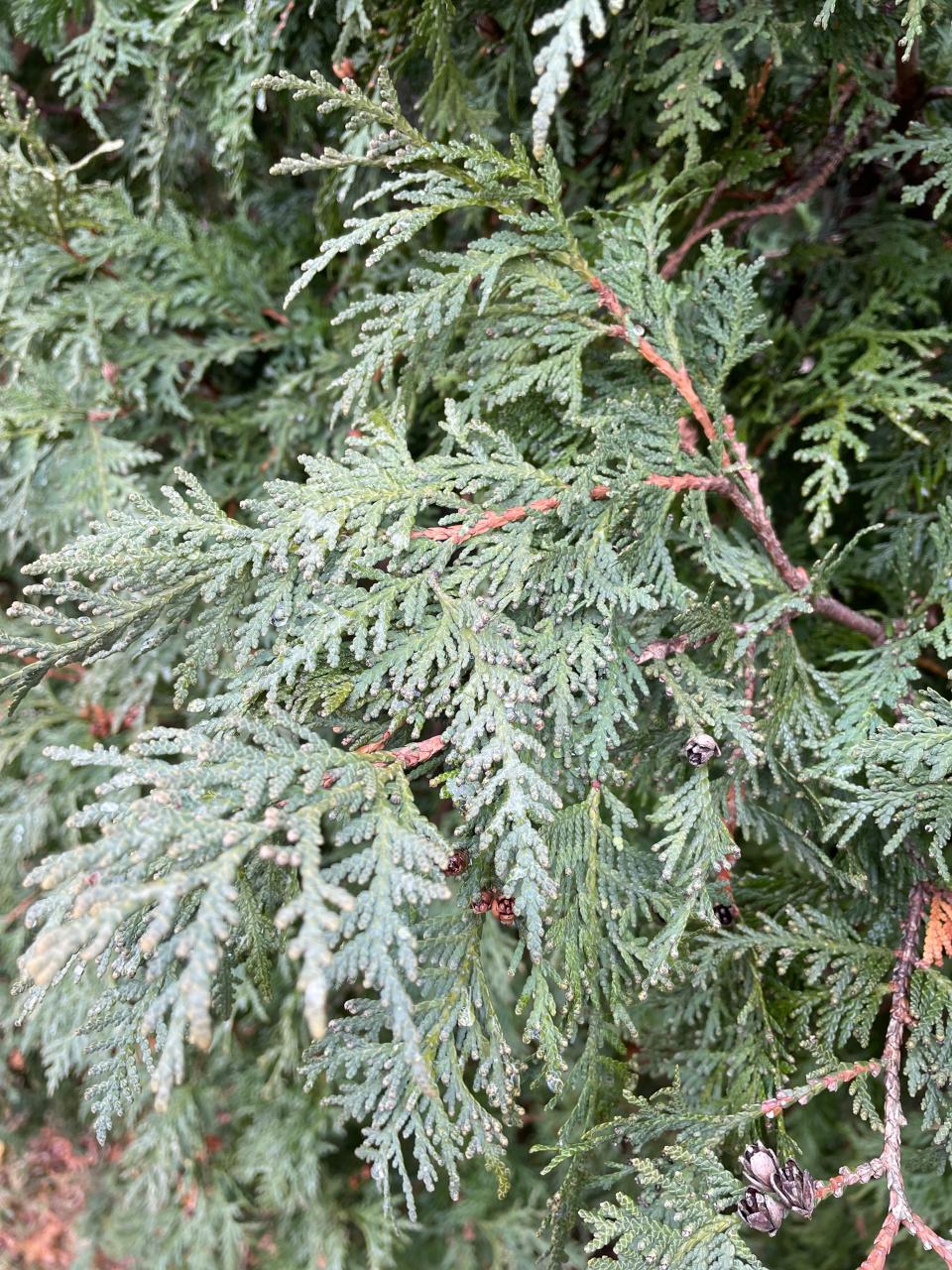Native Plant: American arborvitae perfect for use as hedges or screens

Editor's note: Once a month, the OSU Extension master gardener's office of Franklin County profiles a plant that occurs naturally in central Ohio.
One of the most widely used landscape plants is the American arborvitae — Thuja occidentalis. Growing naturally in many regions of eastern North America, this native evergreen tree has been cultivated into numerous shapes and sizes.
The straight species of this plant is a large tree that grows to 60 feet tall in cultivated landscapes and up to 100 feet in the wild. Most of the estimated 100-plus cultivars are smaller trees or shrubs. Several are pyramidal in shape, while some are tall and skinny. Still others are short and round. The many cultivars have multiple uses in the landscape — hedges and screens, foundation plantings, and use as accents or specimens.
Perhaps the most popular variety is the emerald green arborvitae (T. occidentalis ‘Smargd’). Growing 12 to 15 feet tall, it is a staple screening shrub in many residential landscapes.
In favorable growing conditions, most varieties of arborvitae produce bright green foliage arranged in flat lateral sprays of overlapping branchlets. The attractive foliage can sometimes turn yellow-green to brown-green in winter. On mature plants the red-brown bark will exfoliate (peel), producing another ornamental effect. Small half-inch-long cones are produced each season.
Arborvitae prefers full sun but will tolerate some afternoon shade. Too much shade will result in thin foliage growth. It is not fussy about soil and will tolerate clay and soils that are slightly alkaline. Arborvitae should not be planted on sites that are exposed to heavy winds, which can produce yellowing or browning of the foliage.
In general, this is a care-free landscape plant that adapts well to trimming and shearing.

Birds and small mammals are attracted to the dense foliage of arborvitae for nesting and cover, and deer will browse its foliage.
In the 1500s, French botanists labeled this plant “arborvitae,” or “tree of life,” for its medicinal properties. They subsequently brought specimens back home, making it the first North American species introduced to the European continent. Its leaves and leaf oils have been used to treat problems such as bronchitis, bacterial infections, immune deficiencies, and joint and muscle pain.
In addition to medicinal uses, derivatives of this plant are used for flavorings for foods z and fragrances in cosmetics and soaps. The wood of arborvitae has been used for numerous items. Its rot and termite resistance makes it useful for fencing, poles, shingles and other applications where the wood is exposed to the ground or water.
Growing conditions
Hardiness zones: 2-7
Sun: full sun or limited partial shade
Water: adaptable; tolerates wet conditions
Soil: performs best in moist, neutral to alkaline loams
Maintenance: low maintenance
Propagation: by seed and cuttings
Pests and diseases: Leaf miners, bagworms, mealybugs, scales and spider mites can be occasional problems.
This article originally appeared on The Columbus Dispatch: Native Plant: Low-maintenance arborvitae has many uses
